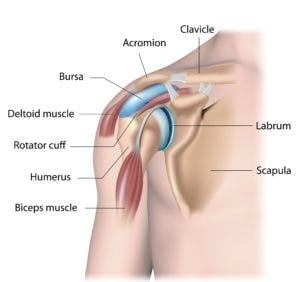New Information: Physical therapy (not your ordinary treatment either) plus a new electrical medical device can alleviate fibromyalgia symptoms.
Are you looking for a fibromyalgia specialist in Visalia? We have clinicians that specialize in fibromyalgia treatment in Visalia and Hanford.
Fibromyalgia is an extremely common pain disorder that affects nearly 5 million Americans. Women are affected far more frequently than men, as about 80-90% of cases develop in females, with symptoms usually beginning to develop between ages 30-50. Fibromyalgia is also a chronic condition, which means that the majority of individuals who have it are affected over a long period of time.
The cause of fibromyalgia is not clearly understood, but it’s believed to be related to changes in how the nervous system processes pain and may be triggered by trauma, surgery, infection, arthritis, or major emotional stress in some patients. Fibromyalgia is also considered a complex syndrome that involves many components, rather than just an individual condition. This is the main reason it can include many different signs and symptoms, such as widespread pain, tender points throughout the body, muscle stiffness, fatigue, depression/anxiety, thinking or memory problems, and numbness/tingling sensations. These symptoms can really get in the way of normal functioning and may also lead to reduced physical activity levels and additional health problems in the future.
There is no cure for fibromyalgia, but physical therapy is one intervention that’s been found to significantly help patients by easing symptoms and improving their quality of life. A typical physical therapy program for fibromyalgia will consist of aerobic exercise recommendations, stretching and strengthening exercises, ice and/or heat therapy, hands-on therapy (manual therapy), and possibly water-based aquatic exercise.
TrueReliefTM is a New Treatment Tool that Can Make a Huge Difference
Another tool that physical therapists might use for fibromyalgia is a medical device called True ReliefTM. This doctor-prescribed intervention sends an electric current to painful areas of the body affected by fibromyalgia, which is intended to “reboot” the nerves in the involved area to bring back a normal impulse. Resetting these impulses leads to a release of the body’s natural pain-relieving chemicals, which in turn alleviates the symptoms of fibromyalgia. TrueReliefTM can be used as many times as are needed and is not associated with any significant side effects.
If used, TrueReliefTM will always be combined with some of the other physical therapy techniques described above to produce the best possible outcomes. Utilizing an exercise-based approach has been supported by a number of research studies, including a high-quality review published in 2017, which features the following conclusion:
This study concludes that aerobic and muscle strengthening exercises are the most effective way of reducing pain and improving global well-being in people with fibromyalgia and that stretching and aerobic exercises increase health-related quality of life. In addition, combined exercise produces the biggest beneficial effect on symptoms of depression.
So if you’re dealing with wide-ranging symptoms that may be due to fibromyalgia, we strongly recommend that you try the chronic pain and fibromyalgia experts with offices in Visalia and Hanford. We provide laser therapy, TrueRelief, and personalized, progressive physical therapy.

